Today’s Current Affairs: 13th August 2025 for UPSC IAS exams, State PSC exams, SSC CGL, State SSC, RRB, Railways, Banking Exam & IBPS, etc
Table of Contents
Vitthal Rukhmini Temple:
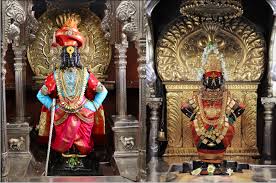
A Marathi-Hindi language row has emerged at Pandharpur’s renowned Vitthal-Rukhmini temple recently.
- It is a Hindu temple situated in Pandharpur, Maharashtra.
- Located on the banks of the river Bhima, also known as Chandrabhaga, Sri Vitthal Rukmini Mandir is dedicated to Lord Vithoba, a form of the Lord Vishnu or Krishna, and his consort Rukhmini.
- The temple is classified as one among the 108 Abhimana Kshethrams of the Vaishnavate tradition.
- The temple was built by King Vishnuvardhana of the Hoysala Empire between 1108 and 1152 CE.
- He built the temple after being persuaded by Pundalik, a historical figure, great devotee of Lord Krishna.
- There is an inscription in the temple, of a Hoysala King Vira Someshwara dating back to 1237 CE, which grants the temple a village for its upkeep.
- An extensive temple was constructed in the second half of the 13th century following the Hemadpanti style of architecture.
- The temple was attacked by invaders and completely damaged.
- The present temple was built in the 17th century & later in the Deccan style, with dome motifs and lobed arches by the contribution of Peshwas of Pune, the Shindes of Gwalior, and the Holkars of Indore.
- The temple was the first shrine in India that welcomed people and women from backward categories as priests in 2014.
Pneumococcal Disease : New Study
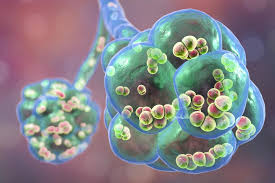
Drug firm Pfizer recently introduced its next-generation 20-valent pneumococcal conjugate vaccine (PCV20) for adults in India, offering protection against 20 serotypes responsible for a majority of pneumococcal diseases.
- Pneumococcal disease refers to a range of illnesses that affect various parts of the body and are caused by infection with the bacterium Streptococcus pneumoniae, commonly known as pneumococcus.
- Streptococcus pneumoniae is an encapsulated bacteria with a polysaccharide capsule, an essential factor in virulence.
- About 90 distinct pneumococcal serotypes have been identified throughout the world, with a small number of these serotypes accounting for most diseases.
- Illnesses range from mild infections, such as ear infections, to pneumonia and life-threatening infections of the bloodstream and central nervous system, such as meningitis.
- It is a major public health problem worldwide.
- In the developing world young children and the elderly are most affected.
- It is estimated that about one million children die of pneumococcal disease every year.
- Pneumococci are transmitted by direct contact with respiratory secretions from patients and healthy carriers.
- Treatment typically involves antibiotics.
- Vaccines can reduce the risk of infection, especially in young children and older adults.
- Pneumococcal resistance to antimicrobials is a serious and rapidly increasing problem.
Talaq-E-Hasan:

The Supreme Court recently agreed to hear a batch of petitions challenging the practice of talaq-e-hasan as unconstitutional.
- Talaq-E-Hasan is a type of extrajudicial form of divorce mentioned under Islam that only men can practice.
- It is a revocable form of divorce.
- A traditional form of divorce, ‘Talaq-e-Hasan is considered to be approved by Prophet Mohammad and is valid as per all schools of Muslim law.
- To practice ‘Talaq-e-Hasan, a man needs to pronounce talaq on his wife three turns at intervals of one month.
- The period of the gap between the three consecutive talaqs is called the period of abstinence or ‘iddat’ and its duration is 90 days.
- The divorce is assumed to be revoked if the couple begins to cohabit or be intimate during the period of abstinence.
- Triple talaq or Talaq-e-Biddat was banned by the government in 2019.
- In Triple talaq, a man can divorce his wife by pronouncing “talaq” thrice in one go.
- In Triple talaq The divorce is instant and irrevocable.
- Triple talaq is different from ‘Talaq-e-Hasan as it does not have any waiting period and irrevocably terminates the marriage.
Smooth-coated Otters:

The National Zoological Park (NZP) in Delhi welcomes a pair of smooth-coated otters from Surat in a rare animal exchange after 20 years.
- Smooth-coated Otters is a species of otter, the only extant representative of the genus Lutrogale.
- They live in southern and Southeast Asia, China, and India, and in Iraq there is a small population.
- They are mostly found in lowlands, coastal mangrove forests, peat swamp forests, freshwater wetlands, large forested rivers, lakes, and rice paddies.
- They are the largest otter in Southeast Asia.
- The fur of this species is smoother and shorter than that of other otters.
- The fur is light to dark brown dorsally and light brown to almost gray ventrally.
- They have short, tightly packed under fur and longer, water-repellant guard hairs.
- They are strong swimmers and hunt in groups. When fishing, they travel in a V-formation going upstream.
- Threats: Loss of habitat, habitat degradation due to water pollution from fertilizers and pesticides and poaching.
- Conservation Status: IUCN: Vulnerable.
Dhirio-Bull Fighting:
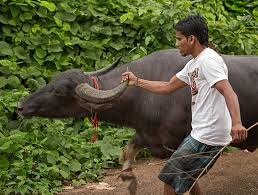 c
c
During a discussion in the state Assembly legislators across party lines demanded the legalisation of bull fighting which is locally called Dhirio in Goa.
- Bull fighting, locally in Goa is referred to as dhirio or dhiri, is an integral part of Goa’s cultural fabric.
- It is organised after the harvest season.
- These bull fights have traditionally been held in paddy fields and football grounds of Goa, with village shepherds bringing in their animals.
- Dhiri was a “part and parcel of every Church fest” and villagers from miles around would gather to witness the popular sport.
- These bull fights have traditionally been held in paddy fields and football grounds of Goa
- A bull fight begins with two bulls dashing at each other and locking horns.
- They head-butt each other and repeatedly charge and retreat, provoked by trainers standing behind.
- Bull fights have been taking place in Goa for generations, going back to the time of the Portuguese.
- The High court in 1997 directed the state to take immediate steps to ban “all types of animal fights including bull fights and ‘dhirios.
India’s 3rd Voluntary National Review on SDGs:
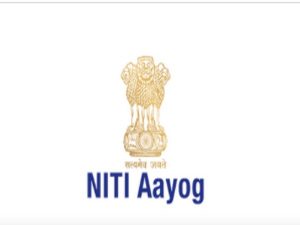
NITI Aayog presented its 3rd Voluntary National Review (VNR) Report on the Sustainable Development Goals (SDGs) at the High-Level Political Forum (HLPF) convened by the UN- Economic and Social Council (ECOSOC).
- India presented the first voluntary national review of SDGs in 2017 & second in 2020.
- India employs data tools like the SDG India Index, North-Eastern Region District SDG Index, and Multi-dimensional Poverty Index (MPI) to monitor progress, identify lagging areas, and guide policies.
- Its emphasis is placed on localizing SDGs through sub-national and district-level actions.
- SDG 1 (No Poverty): An estimated 248 million people have escaped multidimensional poverty between 2013-14 and 2022-23, highlighting effective poverty alleviation strategies.
- SDG 2 (Zero Hunger): The PM Garib Kalyan Anna Yojana has provided vital nutritional support to millions, aiming to assist approximately 81.35 crore beneficiaries. Starting in 2024, the scheme will continue for the next five years.
- SDG 3 (Good Health and Well-being): POSHAN Abhiyaan and Ayushman Bharat have expanded access to quality nutrition and healthcare. Out-of-pocket health expenditure as a percentage of total health spending declined from 62.6% in 2014-15 to 39.4% in 2020-21.
- SDG 7 (Clean Energy Transition): Initiatives such as the National Green Hydrogen Mission, PM-KUSUM, and PM Surya Ghar Muft Bijli Yojana have accelerated India’s adoption of sustainable energy sources.
- SDG Progress Through Digital Financial Inclusion: India’s Jan Dhan–Aadhaar–Mobile (JAM) based Digital Public Infrastructure (DPI) drives inclusive, transparent services.
- India accounted for 48.5% of global real-time payment volume in FY 2025, driven by a 41.7% increase in UPI transaction volume.
World Elephant Day:
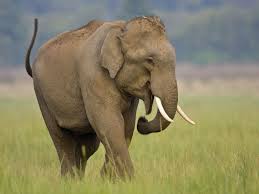
On 12th August, the Ministry of Environment, Forest and Climate Change (MoEF&CC) celebrated World Elephant Day in Coimbatore, focusing on human-elephant conflict.
- Patricia Sims of Canada and the Elephant Reintroduction Foundation of Thailand, jointly established World Elephant Day on 12th August 2012.
- Since then Patricia Sims continues to lead the initiative.
- The initiative, partnered with over 100 organisations, aims to raise global awareness on elephant conservation, with millions showing support each year through World Elephant Day.
- Status of Asian Elephants in India:
- The Asian elephant, India’s largest terrestrial mammal, is found mainly in the south, northeast, and central regions.
- About 28,000–30,000 live in fragmented populations across four regions, making habitat and corridor conservation crucial.
- Protection Status of Asian Elephants: IUCN Red List (Endangered), Wildlife (Protection) Act, 1972 (Schedule I), and Convention on International Trade in Endangered Species of Wild Fauna and Flora (CITES) (Appendix I).
Removal of Free-Ranging Dogs from Delhi-NCR Localities : Supreme Court Order
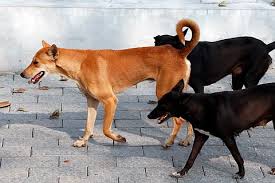
The Supreme Court of India, directed immediate removal of all free-ranging dogs from Delhi, Noida, Gurugram, and Ghaziabad.
- The apex court ordered their permanent relocation to shelters to curb rabies cases and dog-bite incidents, prioritising safety of children and vulnerable citizens.
- Authorities must capture all stray dogs in Delhi, Noida, Gurugram, and Ghaziabad, ensuring none are left roaming in public areas. This is aimed at creating stray-free streets in both core and peripheral urban zones.
- Captured dogs will be kept in shelters permanently, ending the earlier practice under ABC rules of releasing them back into their original localities. This intends to permanently break the cycle of repeated attacks.
- The SC mandated building facilities with capacity for 5,000 dogs within eight weeks, starting with the most vulnerable localities. This ensures adequate housing and avoids overcrowding of captured animals.
- A 24×7 helpline must be set up so that any reported dog bite case is acted upon within four hours. This provides immediate intervention to protect public health and safety.
- Any person or organisation obstructing the removal process will face contempt of court. This gives the order enforceability and deters interference from interest groups.
Revised Income Tax Bill, 2025:

Finance Minister has tabled the revised Income Tax Bill, 2025 in the Lok Sabha, incorporating most of the 566 recommendations made by the Parliamentary Select Committee.
- A new legislation to consolidate, streamline, and modernise India’s direct tax framework, replacing the six-decade-old Income Tax Act, 1961.
- Features of the Revised Bill:
- Single ‘Tax Year’ Concept: Replaces “Previous Year” and “Assessment Year” with a uniform term to simplify understanding and compliance.
- Simplified Refund Provisions: Refunds allowed even if ITR is filed after the due date, reducing taxpayer grievances.
- Corporate & MSME Relief: Rs 80M deduction for inter-corporate dividends restored and MSME definition aligned with MSME Act for uniformity.
- Rationalised Property Taxation: Notional rent on vacant property removed; clear deductions for municipal tax and interest on rented property.
- Compliance & Governance Reform: Unnecessary provisions removed, CBDT empowered for digital-era rule-making and NIL-TDS option for zero-liability taxpayers.
- Charitable Trust & LLP Relief: Relaxation in transfer pricing rules and removal of Alternate Minimum Tax on LLPs.
- Enhanced Digital Alignment: Structured section numbering, improved terminology, and cross-referencing for easier navigation and reduced ambiguity.
Nushu Script Conservation:
Nushu, a 400-year-old “women’s script” from Jiangyong, Hunan province, is witnessing a revival among Gen Z Chinese women, who see it as a cultural symbol of sisterhood and empowerment.Nüshu is a 17th-century phonetic script created by women in Jiangyong, China, as a private communication system when they were excluded from formal education. It uses slender, curved, leaf-shaped characters tied to the local dialect. Traditionally passed between women through letters, songs, and embroidery, it symbolises resilience and sisterhood.
Operation Falcon:
The Assam government’s Operation Falcon has successfully arrested 42 rhino poachers, dismantled six major poaching gangs, and foiled nine poaching attempts, ensuring zero rhino killings in the state so far in 2025.It is ajoint anti-poaching initiative launched in 2024 by the Assam Police and Assam Forest Department to eliminate rhino poaching networks and curb illegal wildlife trade.
Organisations Involved:
Assam Police – Law enforcement, intelligence gathering, and operations.
Assam Forest Department – Habitat monitoring, patrolling, and wildlife protection.
Envelope Dimer Epitope:
A new study published in Science Translational Medicine has identified Envelope Dimer Epitope (EDE)-like antibodies as a major driver of cross-serotype immunity against dengue.It is a quaternary epitope found on the envelope (E) protein of the dengue virus surface, formed when two E proteins pair together. Function: A key immune target capable of generating broad, cross-serotype protection. Present only in mature virus particles, making it a precise target for neutralising antibodies.The Envelope Dimer Epitope (EDE) is a unique structure on the outer covering of the dengue virus, formed when two envelope (E) proteins pair up.
Cabinet Approves ₹4,600 Crore Semiconductor Manufacturing Projects in Odisha, Punjab, and Andhra Pradesh:
The Union Cabinet, chaired by Prime Minister Narendra Modi, has approved ₹4,600 crore for four new semiconductor manufacturing projects in Odisha, Punjab, and Andhra Pradesh. These will be set up under the India Semiconductor Mission (ISM), bringing the total number of approved semiconductor projects to 10 across six states.
Karnataka’s GST evasion in FY25 rose to ₹39,577 crore:
Karnataka recorded a dramatic surge in Goods and Services Tax (GST) evasion during the 2024–25 financial year, with the Central GST (CGST) department detecting evasion worth ₹39,577 crore—over five times higher than the previous year. The data, presented by Finance Minister Nirmala Sitharaman in a written reply to the Lok Sabha, also clarified that no notices were issued solely on the basis of UPI transactions by the central authorities.
Government Approves ₹4,200 Crore MERITE Scheme:
The Union Cabinet has approved the Multidisciplinary Education and Research Improvement in Technical Education (MERITE) scheme, a ₹4,200 crore Central Sector initiative aimed at improving the quality, equity, and governance of technical education in India. The scheme will be implemented in 275 institutions—175 engineering colleges and 100 polytechnic institutes over a five-year period from 2025-26 to 2029-30.




